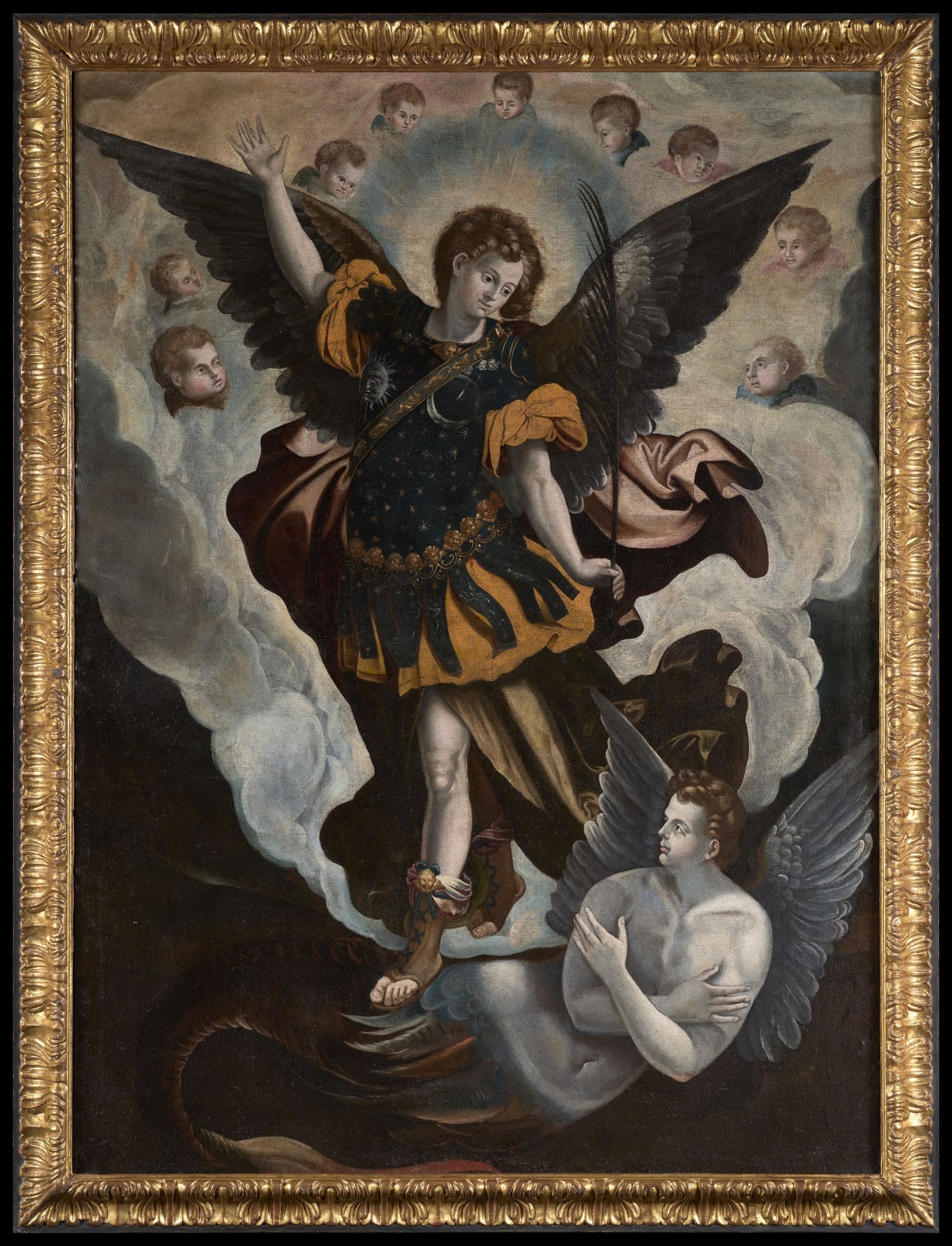Andrés de la Concha (Sevilla, c.1559 Oaxaca, Mexico, 1612)
Saint Michael Archangel, ca. 1600
Oil on canvas
135 x 99 cm
Provenance
Private colllection, Spain.
the painting we are introducing today forms part of that broadest of Christian artistic corps which, beyond the aesthetic and educational motives assigned to versions created by and for the Old Continent, constitutes a clear example of the instrument of instruction and persuasion into which the Catholic Counter Reformation transformed art, identifiable in this exceptional example of Latin American Mannerism.
Read Essay(EN)
Read Essay(ES)
